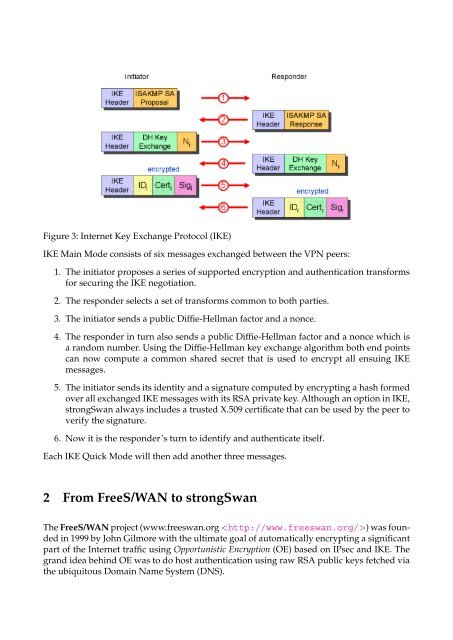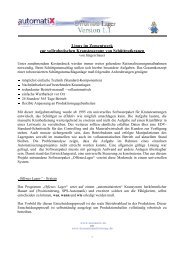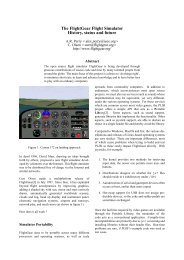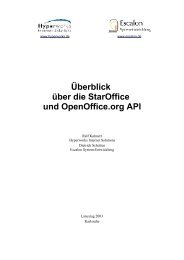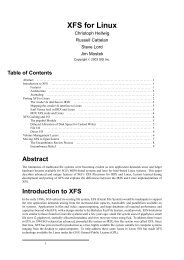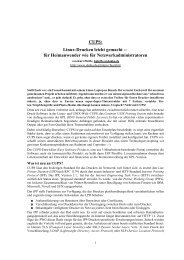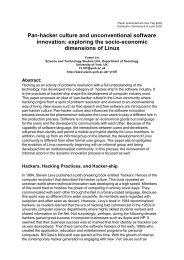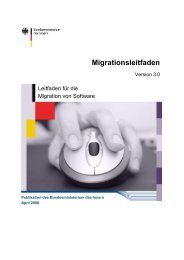Advanced Features of Linux strongSwan - the OpenSource VPN ...
Advanced Features of Linux strongSwan - the OpenSource VPN ...
Advanced Features of Linux strongSwan - the OpenSource VPN ...
Create successful ePaper yourself
Turn your PDF publications into a flip-book with our unique Google optimized e-Paper software.
Figure 3: Internet Key Exchange Protocol (IKE)<br />
IKE Main Mode consists <strong>of</strong> six messages exchanged between <strong>the</strong> <strong>VPN</strong> peers:<br />
1. The initiator proposes a series <strong>of</strong> supported encryption and au<strong>the</strong>ntication transforms<br />
for securing <strong>the</strong> IKE negotiation.<br />
2. The responder selects a set <strong>of</strong> transforms common to both parties.<br />
3. The initiator sends a public Diffie-Hellman factor and a nonce.<br />
4. The responder in turn also sends a public Diffie-Hellman factor and a nonce which is<br />
a random number. Using <strong>the</strong> Diffie-Hellman key exchange algorithm both end points<br />
can now compute a common shared secret that is used to encrypt all ensuing IKE<br />
messages.<br />
5. The initiator sends its identity and a signature computed by encrypting a hash formed<br />
over all exchanged IKE messages with its RSA private key. Although an option in IKE,<br />
<strong>strongSwan</strong> always includes a trusted X.509 certificate that can be used by <strong>the</strong> peer to<br />
verify <strong>the</strong> signature.<br />
6. Now it is <strong>the</strong> responder’s turn to identify and au<strong>the</strong>nticate itself.<br />
Each IKE Quick Mode will <strong>the</strong>n add ano<strong>the</strong>r three messages.<br />
2 From FreeS/WAN to <strong>strongSwan</strong><br />
The FreeS/WAN project (www.freeswan.org ) was founded<br />
in 1999 by John Gilmore with <strong>the</strong> ultimate goal <strong>of</strong> automatically encrypting a significant<br />
part <strong>of</strong> <strong>the</strong> Internet traffic using Opportunistic Encryption (OE) based on IPsec and IKE. The<br />
grand idea behind OE was to do host au<strong>the</strong>ntication using raw RSA public keys fetched via<br />
<strong>the</strong> ubiquitous Domain Name System (DNS).


